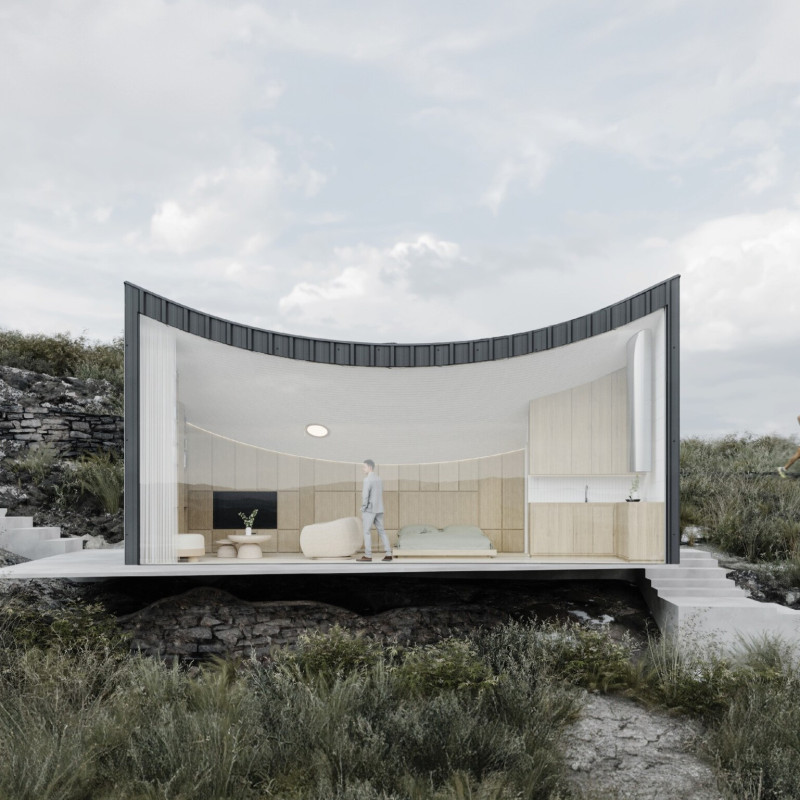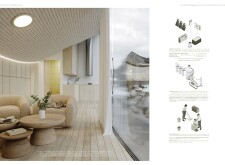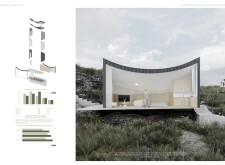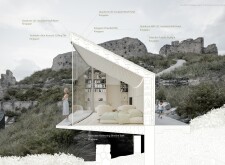5 key facts about this project
### Project Overview
Located in the northwestern region of Italy, the Net-Zero Microhome represents a thoughtful approach to micro dwelling design with a focus on innovation and sustainability. This project was developed as a competition entry, and it aims to maintain a respectful relationship with the natural surroundings while incorporating modern design principles. The architectural intent emphasizes minimizing the ecological footprint while creating a functional living space that harmonizes with the local landscape, characterized by rolling hills and rugged terrain.
### Spatial Strategy
The design features a carefully considered spatial layout that fosters openness and connectivity among its various areas. The ground floor plan introduces interconnected spaces, including a central living area designed for comfort and versatility. It accommodates minimalist furnishings alongside a kitchenette, with large operable windows enhancing natural light and reinforcing biophilic design principles. Flexible spaces are integrated throughout the microhome, capable of adapting to various functions, such as sleeping or working, reflecting contemporary living demands. Extensive glazing and outdoor terraces contribute to a fluid interaction between indoor and outdoor environments.
### Material Selection and Sustainability
The material palette prioritizes sustainability, focusing on options that minimize environmental impact while enhancing the building's performance. Key materials include Kingspan Quadcore LEC insulated panels for superior insulation and energy efficiency, as well as TROLDTEKT V-line acoustic ceiling tiles, which are sustainably sourced and improve interior acoustic quality. The project also integrates a rainwater harvesting system, illustrating a commitment to water conservation. Lightweight steel construction, approximately 1,634 kg, further exemplifies modern engineering practices aimed at optimizing strength and reducing the ecological footprint. The incorporation of solar panels, rainwater systems, and efficient wastewater management ensures self-sufficiency in energy and water throughout the microhome's lifecycle.





















































